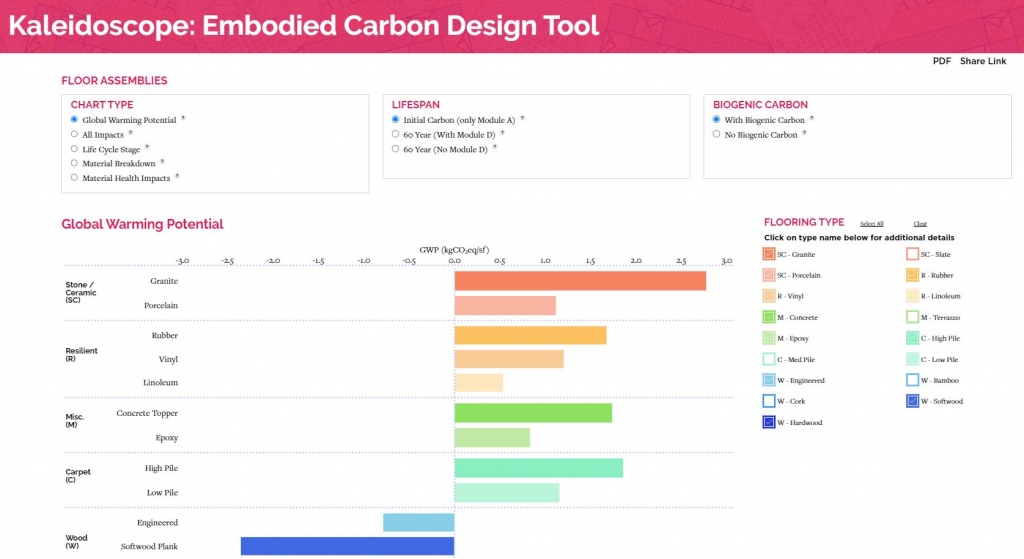At PAYETTE, we recognize that our architectural projects have far-reaching implications – on the environment, building occupants and the broader community. As stewards of design, we take a comprehensive view of material selection, considering not only aesthetics, cost and performance, but also material health, life cycle impacts and supply chain equity. These choices directly impact a great number of people who occupy and construct our buildings, and it is important to recognize that they also have a global impact on human and environmental health.
Our approach encompasses several critical factors:
Material Health
We prioritize materials that promote well-being and minimize harm. To achieve this, we are eliminating highly fluorinated chemicals, antimicrobials, flame retardants and vinyl from our selections. These chemicals, prevalent in many building products, are known to be worst offenders and pose risks from extraction to disposal for a range of health hazards. By avoiding them, we contribute to healthier spaces for all.
Embodied Carbon
Recognizing that the extraction, production and disposal of materials contribute significantly to carbon emissions, we seek low-carbon alternatives. Our commitment extends beyond operational energy efficiency to the entire life cycle of our buildings.
Supply Chain Equity
We advocate for transparency and ethical practices within supply chains. By partnering with responsible manufacturers, we support fair labor practices and sustainable sourcing.
Cost and Performance
Balancing economic feasibility and excellent performance, we make informed decisions. Our materials champions on each project track metrics, ensuring alignment with project goals at each phase.
Managing Complexity
Architectural projects – especially those in research and healthcare – are intricate. We define appropriate levels of detail for our investigations by phase, efficiently identifying high-impact decisions early on.
Client Education
We engage clients in meaningful dialogue, working with them to define which factors take precedence. Together, we navigate the complexities of material choices, fostering informed decision-making.
This more formalized approach combines the efforts of multiple internal research groups considering different sustainability aspects of materials with the traditional factors that project teams weigh when making choices. Balancing sustainability criteria of material health, embodied carbon and supply chain equity is an ongoing process. We are not perfect and are actively educating ourselves daily on these evolving topics. PAYETTE has had a Healthy Material Policy in place since 2019, and we are now making a conscious effort to add embodied carbon and supply chain equity into our material selection process. Information regarding embodied carbon with LCA’s and EPDs has become more readily available. There is also more awareness and guidance around supply chain equity through Design For Freedom. As we choose materials, we consider all three aspects and make weighted decisions based on a project’s goals.

We use many different strategies to balance these sustainability material goals. The first and most important is education. We work to educate our PAYETTE People and our clients as to why we need to include material health, embodied carbon and supply chain equity, and how to align these with project goals. Our research teams continue to develop tools, such as Kaleidoscope and internal references, to make the research and selection process easier and more efficient for teams. We are piloting a new strategy to identify a material champion for project teams to spearhead and track the effort.

Our commitment extends beyond aesthetics; it is about creating resilient, inspiring spaces that positively impact people and the planet. By codifying our materials selection process, we pave the way toward a healthier, more just and lower-carbon future for the design and construction industries.



